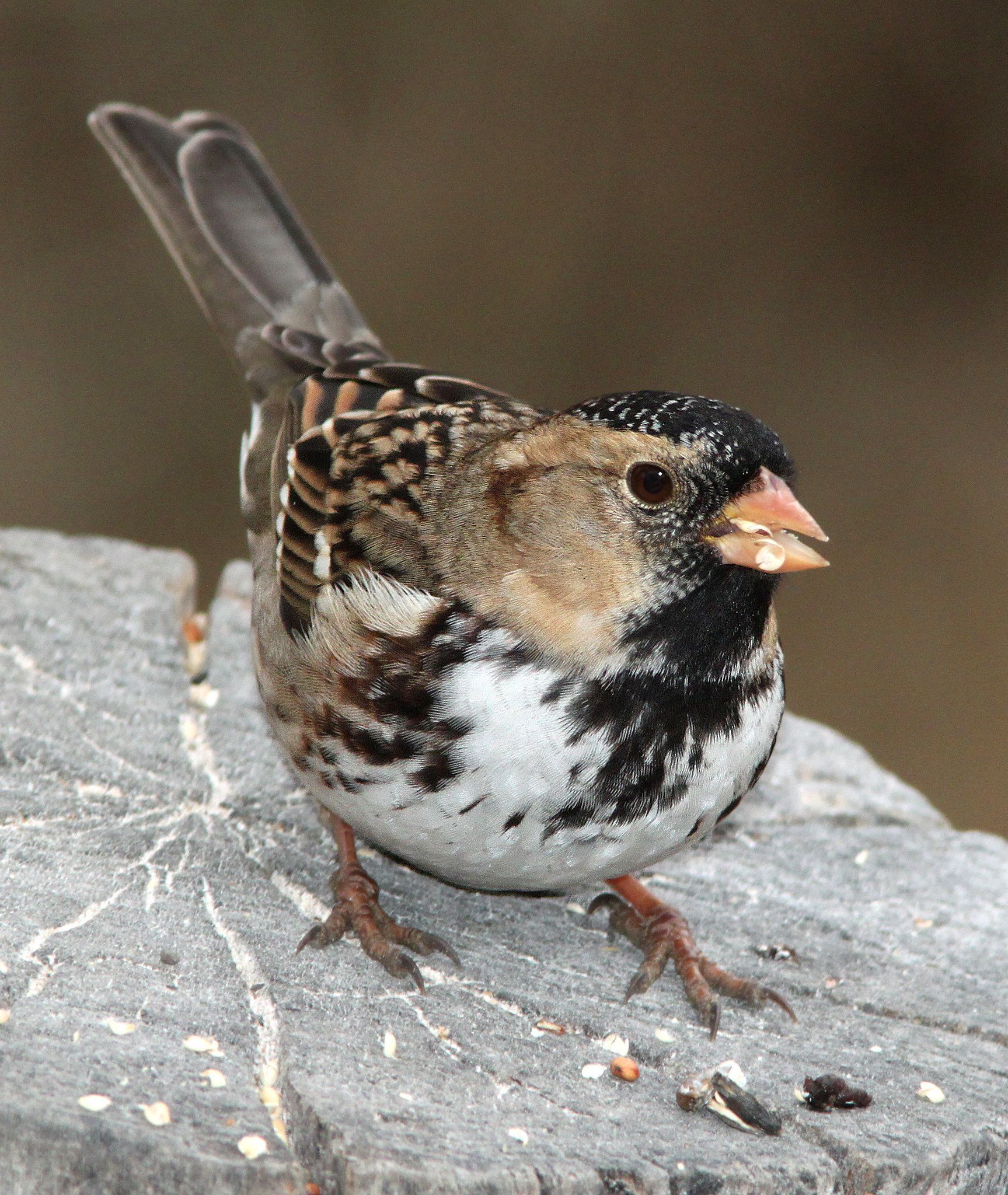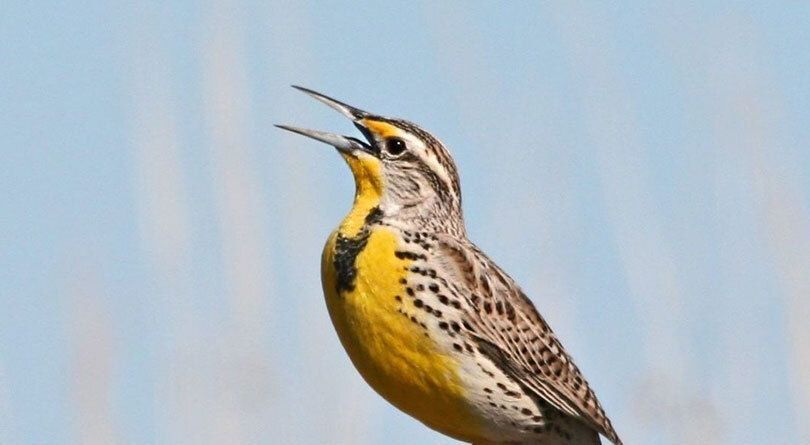
“I can’t see those birds in the tree — the leaves are in the way!” Well, that’s not a problem anymore, is it? What winter takes away also reveals something more. The leaves that interrupted views of a warbler flitting hither and thither have fallen to give us a better look at our winter birds. They’ve returned home for the holidays, back from their summer excursions far north.
A smaller number of species frequent the Omaha metro area compared to the rest of the year, but that doesn’t mean there aren’t special things to see and hear. Topping the list, for me at least, is Harris’s Sparrow. The bird’s name doesn’t do justice to how unique they are. The biggest sparrow found in the U.S., they have a black patch that extends from the top of their heads to their throats, helping frame a massive orange bill that almost seems to belong on a Northern Cardinal, a larger bird. In the winter, Harris’s Sparrows are only found in the central Great Plains, including eastern Nebraska. Their favorite habitats are brushy edges: fencerows, hedges, and shrubby areas on the margins of backyards and fields. They’re not hard to find around Omaha; reliable spots include Heron Haven, Glacier Creek Preserve, Fontenelle Forest, and many other green areas large and small.
As they breed so far north, Harris’s Sparrows are not included in the summer Breeding Bird Survey, making the annual Christmas Bird Counts one of the few available measures of their population size. The data suggest a long-term decline in their numbers, and loss of good wintering habitat such as shrubby fencerows is probably a contributing factor. Submitting observations of this species on eBird can help biologists gain a better understanding of how to conserve them.
As fall deepens and winter creeps closer, “weird duck season” begins. You see, Mallards aren’t the end-all-be-all of ducks in North America. Ducks come in all shapes and sizes, from the tiny Bufflehead to the massive Canvasback. Their bills range from thin and dagger-like (Common Mergansers) to stout and spade-like (Northern Shovelers.) And many of these species move south in the fall after breeding much further north. Thus, many have dubbed late fall “weird duck season.” An impressive diversity of waterfowl appears in the metro area throughout the fall and winter. Visiting your local water body regularly to search for new arrivals will help you get familiar with many different species — their calls, behavior, and what they look like in profile from a distance. With any luck, you’ll be a certified weird duck expert by the spring.
Moving beyond ducks to other waterfowl, check bare cropfields for swirling tornadoes of migratory Snow Geese feeding on waste grain. You might see several thousand on one drive along I-29. Many people throughout history have identified the honking of a Canada Goose flock overhead as the essential sound of fall. And to be sure, it has its charms. But for me, hearing the more distant bugling of Snow Geese flying under the moon is the signature soundtrack of autumn. I often hear it when I’m taking the trash can to the curb in the evening — maybe you will, too.
FOR LIST LOVERS:
Waterbirds
• Snow Geese
• Northern Shoveler
• Gadwall
• American Wigeon
• Northern Pintail
• Green-winged Teal
• Canvasback
• Redhead
• Ring-necked Duck
• Lesser Scaup
• Bufflehead
• Common Goldeneye
• Hooded Merganser
• Common Merganser
Landbirds
• Bald Eagle
• Winter Wren
• Pine Siskin
• American Tree Sparrow
• Fox Sparrow
• Harris’s Sparrow
• Rusty Blackbird

